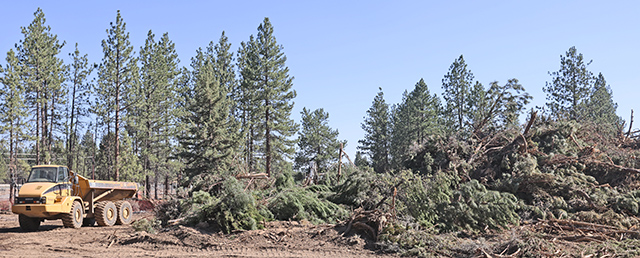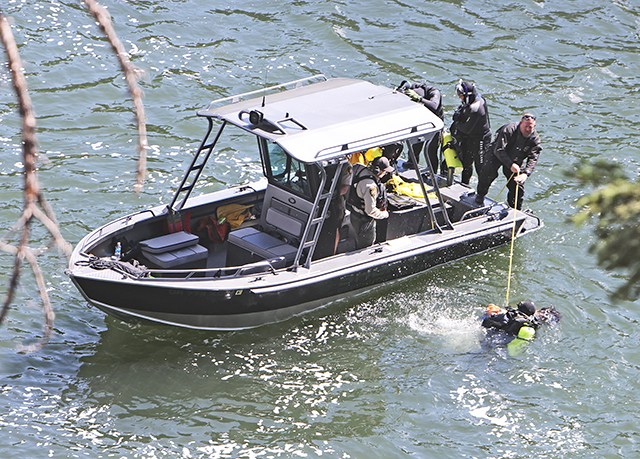A guide to Oregon’s Dark Sky country: How to go stargazing in our state’s darkest places
Published 7:26 am Friday, January 31, 2025
Oregon has been abuzz with dark sky news lately. Over the last few years, we’ve seen announcements of new Dark Sky Parks, Dark Sky Communities and the biggest Dark Sky Sanctuary in the world — all in our own backyard.
It’s largely been the work of the Oregon Dark Sky Network, an ad-hoc group of state, local and federal officials, private individuals, business owners and tourism agencies, who have been working with DarkSky International, an organization that says it is dedicated to protecting the nighttime environment and preserving dark skies through environmentally responsible outdoor lighting, and which hands out the designations.
Trending
According to Travel Oregon, the new designations aren’t just for bragging rights, they’re part of an effort to juice astrotourism, attracting visitors with the promise of a good look at the stars, planets, meteor showers and other astronomical events.
As Oregon’s new Dark Sky country takes shape, it’s high time for a guide to the sprawling area and numerous designations. If you’ve been wondering what, exactly, these Dark Sky Places are all about, and how you can go about seeing them, here’s what you need to know:
Dark Sky Parks
To date, there are three Dark Sky Parks in Oregon, though odds are good that number will go up. The designated parks are Prineville Reservoir State Park, the Oregon Caves National Monument & Preserve and Cottonwood Canyon State Park. Crucially, all three spots offer campgrounds that allow people to spend a night under the dazzling stars.
According to DarkSky International, a Dark Sky Park is a place that is protected for its scientific, natural, cultural or educational values, and which also meets all the organization’s dark sky requirements. A Dark Sky Park can be on public or private land, but the land owners must consent to “the right of permanent, ongoing public access.”
Oregon Outback Dark Sky Sanctuary
Trending
Already the biggest Dark Sky Sanctuary in the world, the Oregon Outback International Dark Sky Sanctuary is pegged for expansion in the near future, which would take it from a whopping 2.5 million acres to an eye popping 11.4 million acres.
The Oregon Outback currently comprises the southeastern half of Lake County, including Hart Mountain, Lake Abert and Summer Lake. Future plans include expanding into Harney and Malheur counties.
A Dark Sky Sanctuary is not so different from other designations, according to DarkSky International, but is “typically situated in a very remote location with few (if any) nearby threats to the quality of its dark night skies.” Importantly, a sanctuary also “does not otherwise meet the requirements for designation as a park or reserve.”
Dark Sky Communities
Two Oregon towns, Sisters and Antelope, have already been named Dark Sky Communities, earning the designation within weeks of each other this winter. Sisters is found on the eastern edge of the Cascade Mountains close to Bend. Antelope, a tiny town of only 37 people, is near the John Day Fossil Beds in central Oregon.
In order to receive a Dark Sky Community designation, a town or city must show “exceptional dedication to the preservation of the night sky,” according to DarkSky International. That typically means implementing different outdoor lighting and educating people about light pollution.
One defunct Dark Sky Place
In 2020, Sunriver became Oregon’s first Dark Sky Place, designated as a Dark Sky Friendly Development of Distinction — a DarkSky International designation that has since become defunct. While it may not be an official Dark Sky Place, it remains a good place to go stargazing.
The Sunriver Nature Center & Observatory is a must-see destination for those interested in peering into the cosmos. Sunriver is also home to an array of vacation rentals, and good camping is available at the nearby LaPine State Park, which offers deluxe cabins alongside its tent and RV sites. The nearby Newberry National Volcanic Monument is another great stop, with several campgrounds in and around the ancient, exploded volcano.
What you’ll need to go stargazing
Depending on where you are, and what time of year you’re there, you may not need much of anything to enjoy Oregon’s dark skies. On a warm summer night under dark skies, you can simply lie on the ground and look skyward. Still, there are several items to add to your pack list:
- Warm clothes are crucial for those late-night hours in the desert, when temperatures can dip into the 40s, even in July. Be sure to check the overnight temperatures before heading out to a dark sky campground or park.
- Flashlights are always wise when exploring dark areas, but astronomers will tell you to use a headlamp or lantern that can toggle to red light, which has much less impact on your night vision.
- A telescope or binoculars, while not necessary, can really up your dark sky adventure. You can certainly enjoy the stars without magnification, but there’s no doubt that those with the proper gear can see a whole lot more up there.
- For those who don’t know the night sky by heart (that’s pretty much all of us), astronomy apps like SkyView Lite can show you planets and constellations as you scan the sky. Better yet, they can still be used off the grid.
- If you’ll be looking up for long periods of time, consider bringing chairs or blankets that allow you to remain comfortable during, say, a meteor shower or deep gaze into the Milky Way.
— Jamie Hale covers travel and the outdoors and co-hosts the Peak Northwest podcast. Reach him at 503-294-4077, jhale@oregonian.com or @HaleJamesB.
Our journalism needs your support. Subscribe today to OregonLive.com.
©2025 Advance Local Media LLC. Visit oregonlive.com. Distributed by Tribune Content Agency, LLC.






